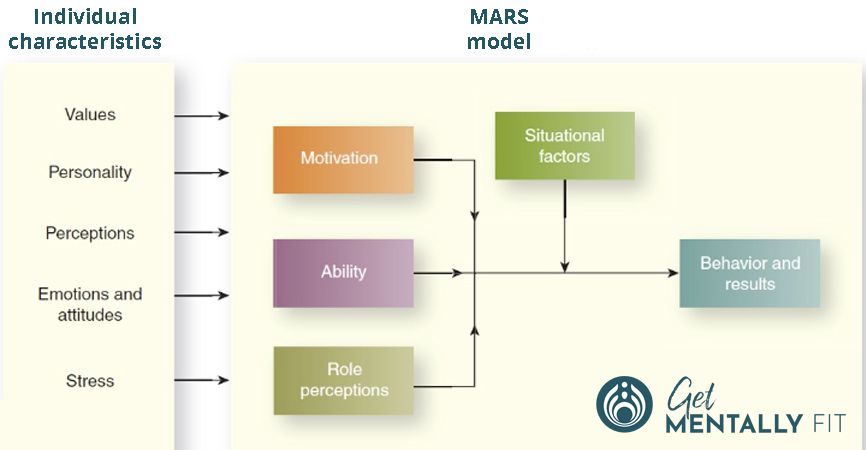It pays to keep up with the pace
In today’s competitive employment market, attracting and retaining skilled people isn’t just about attractive salaries or perks – it’s about truly understanding what drives employee behaviour and performance. If you’re leading a team or managing people, knowing how to effectively influence employee motivation could be your biggest advantage.
Why Understanding Motivation Matters
Over the past few years, workplaces have experienced a seismic shift. Hybrid environments, increased flexibility demands, and a surge in people prioritising personal wellbeing and purpose have redefined the employer-employee relationship.
Skilled employees now seek out workplaces that offer more than a pay cheque. They want meaningful work, professional growth, and to feel psychologically safe and respected. If your workplace doesn’t support this, they’ll look elsewhere – and often, they won’t wait long.
The key to becoming a workplace of choice lies in understanding why people behave the way they do. Let’s unpack this using two powerful frameworks: the MARS Model and the Four-Drive Theory of employee motivation.
1. Apply the MARS Model to Decode Workplace Behaviour
The MARS Model is a reliable tool for analysing the core factors that influence individual employee behaviour and performance:
Motivation: What directs an employee’s effort, how intensely they apply it, and how long they sustain it.
Ability: Their natural talent plus learned skills that enable task completion.
Role Perception: How clearly they understand their responsibilities and how they prioritise their tasks.
Situational Factors: External influences beyond their control that help or hinder performance.
Each of these four elements is influenced by personal traits such as values, emotions, attitudes, and stress levels. When leaders pay attention to these variables, they’re better equipped to proactively manage performance, engagement, absenteeism, turnover, and the business’ bottom line.

2. Tap Into the Four-Drive Theory to Unlock Individual Motivation
Harvard researchers Paul Lawrence and Nitin Nohria identified four universal drives that influence all human behaviour. These drives operate independently but simultaneously, which makes understanding them crucial for influencing motivation.
Here’s how each drive plays out in the workplace – and how leaders can leverage them to get the best out of their people:
Drive to Acquire
People motivated by this drive want status, rewards, and achievement.
👉 Motivate them by: Offering advancement opportunities, recognition, and performance-based rewards.Drive to Bond
These employees are driven by connection and team culture.
👉 Motivate them by: Encouraging collaboration, peer recognition, and involvement in social or values-driven projects.Drive to Learn
Curious minds seek challenge and personal growth.
👉 Motivate them by: Providing learning pathways, mentoring, and opportunities to master new skills.Drive to Defend
These individuals value security and clarity.
👉 Motivate them by: Communicating transparently, respecting boundaries, and establishing psychological safety.
By tailoring leadership and communication approaches to these innate drives, leaders foster stronger connections, enhance engagement, and create more resilient, productive teams.
Here’s a video to recap the Four Drive Theory.
3. Psychological Safety breeds collective Motivation
High-performing teams thrive on trust. Google’s extensive research project, Project Aristotle, found that the number one factor in effective teams wasn’t skill or experience – it was psychological safety.
When employees feel safe to express concerns, share ideas, and admit mistakes without fear of embarrassment or reprisal, motivation increases. Leaders can nurture this by:
Encouraging open dialogue
Rewarding learning and growth (not just outcomes)
Modelling vulnerability and empathy
This culture of trust becomes a powerful motivational force, especially when paired with recognition and clarity of purpose.
4. Make Motivation Part of Your Strategy
Understanding motivation isn’t just a people skill – it’s a strategic business asset. When organisations weave motivation science into their leadership development, performance reviews, and team culture, they see measurable results:
✅ Increased productivity
✅ Better retention rates
✅ Higher engagement scores
✅ Reduced absenteeism
Motivated employees don’t just work harder – they care more. And in today’s climate, that’s a game-changer.
Motivation is Everyone’s Business
Influencing motivation isn’t a one-off task – it’s a leadership mindset and a business strategy. Whether you’re supporting ten people or a team of two thousand, creating the conditions that inspire effort, loyalty, and growth must be embedded into your operations.
When you understand what drives your people and use that insight intentionally, you’re not only improving performance – you’re creating a culture where people want to stay, grow, and thrive.
✅ Ready to take the next step?
🧭 Whether you’re looking to build deeper engagement, reduce turnover, or strengthen leadership across your organisation – we’re here to help.
📞 Get in Touch to explore tailored coaching or training to help you and your team better understand and influence employee motivation.
📥 Or check out our Leader Support and Workshop Menu, which are all crafted to embed lasting performance and wellbeing practices into an individual’s capabilities and workplace culture.
🧠 Want practical insights into what motivates you or your people?
Our Mental Fitness Check assesses what motivates someone, measures their goal orientation, and more.
Your workplace culture shapes everything. Let’s shape it well – together.


